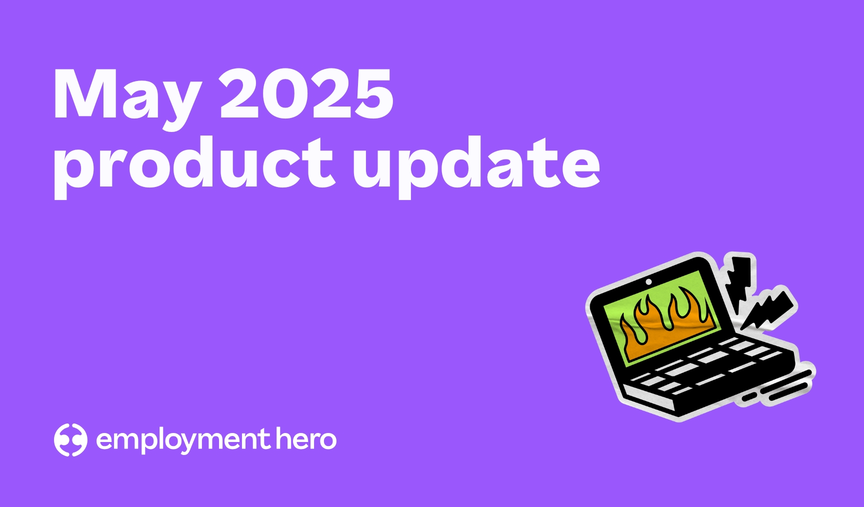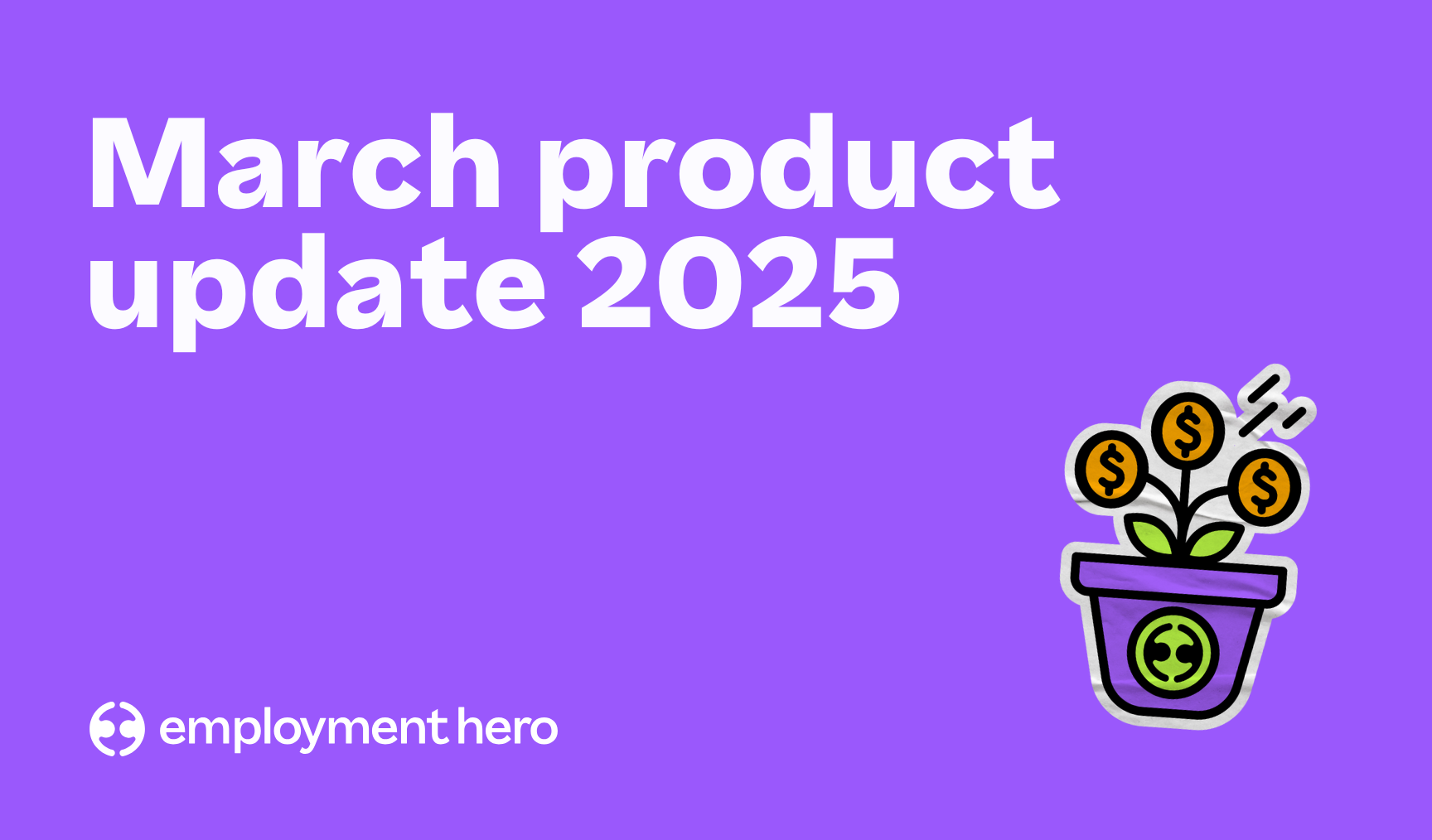11 benefits of employee rostering software in Malaysia
Ditch manual scheduling and save valuable time with employee rostering software. See why more businesses are making the switch in Malaysia.

Contents
Constantly battling scheduling headaches? Creating rosters manually with pen and paper? Or struggling to keep all locations in your business adequately staffed? Alamak.
There’s no reason to be dealing with all that pain and complexity in the scheduling process when you’ve got employee rostering software available. Forget old-school scheduling, it’s time to shake things up and make work life much smoother.
From keeping your team in sync to dodging scheduling messes and boosting productivity, we’re unravelling the perks that make this tech tool a must-have for savvy Malaysian businesses. After all, who doesn’t love a bit of tech magic in the workplace? Read on to find out more.
What is an employee rostering software?
Employee rostering software, also known as employee scheduling software, is a digital tool designed to streamline and automate the process of creating work schedules for employees within an organisation.
This type of software is particularly valuable for businesses with shift-based or rotating work schedules, such as those in retail, food and beverage, healthcare, hospitality, manufacturing, and others.
What challenges does traditional workforce scheduling pose?
Before we get started on the amazing advantages of employee scheduling software, let’s first look at the current challenges many businesses face.
Scheduling conflicts
One of the biggest challenges with traditional workforce scheduling is the increased likelihood of scheduling conflicts. Manual scheduling processes, such as using spreadsheets or paper-based systems, make it easier for errors to occur.
These errors can lead to overlapping shifts, insufficient coverage during peak hours, or unintentional gaps in staffing. Scheduling conflicts not only impact the smooth functioning of business operations but also result in employee dissatisfaction and customer service disruptions.
Lack of visibility on employee availability
Traditional scheduling methods often lack a centralised and real-time view of employee availability. Managers relying on manual systems may struggle to keep track of various factors influencing employee schedules, such as time-off requests, preferred working hours, and part-time or full-time status.
This lack of visibility can result in unintentional oversight, where employees are scheduled during times they are unavailable or prefer not to work. It not only affects workforce satisfaction but can also lead to increased employee turnover as workers seek more flexible and accommodating workplaces.
It’s a time-consuming process
Creating schedules manually is a time-consuming task, especially for businesses with a large and diverse workforce. Managers spend hours organising schedules, considering employee availability, and handling last-minute changes when instead, they can better utilise their time for more strategic and value-adding tasks.
Limited flexibility
Traditional scheduling methods often lack the flexibility needed to adapt to dynamic business environments. When faced with unexpected changes, such as employee no-shows or fluctuations in demand, manual scheduling processes may struggle to quickly and efficiently adjust, leading to less than optimal resource allocation.
Inefficient communication
Communication regarding schedule changes or updates can be challenging in traditional systems. Managers may rely on phone calls, emails, or physical notices to inform employees of changes, which can result in delays, misunderstandings, and difficulties in ensuring that all team members are aware of the latest updates.
Employee dissatisfaction
Employees may experience dissatisfaction with manual scheduling processes, especially if their preferences and availability are not adequately considered. Lack of visibility into schedules, unexpected changes, or consistently receiving schedules that do not align with personal preferences can lead to lower morale and increased turnover.
Compliance risks
Adhering to labour laws and regulations can be more challenging with manual scheduling methods. Ensuring compliance with rules related to working hours, breaks, and overtime is much more difficult, exposing the business to potential legal and financial risks.
Limited data insights
Traditional scheduling methods often lack analytical capabilities. Without access to data-driven insights, businesses miss opportunities to optimise workforce management, improve efficiency, and enhance overall productivity.
Benefits of using an automated employee scheduling software

Now that we’ve covered the challenges of traditional workforce scheduling, let’s move on to the exciting part — the benefits of scheduling software! Let’s use the F&B industry as an example to put things into perspective.
1. Optimised staffing for peak hours
In the F&B industry, where demand can vary significantly throughout the day, automated scheduling ensures optimal staffing levels during peak hours. This helps businesses like restaurants, cafes, and bars efficiently manage busy periods, provide prompt service, and enhance customer satisfaction.
2. Compliance with local laws and regulations
F&B establishments often have a mix of part-time and full-time staff — which entails different work-hour requirements, overtime rules, and rest days for each employee, as defined by the Employment (Part-time Employees) Regulations 2010 and the Employment Act.
Automated scheduling software can efficiently handle this mix, ensuring the fair distribution of shifts and helping managers balance the workforce effectively. It also helps to ensure compliance with these Ministry of Human Resources (MOHR) regulations, minimising the risk of legal issues and penalties.
3. Streamlined multi-location workforce management
Managing workforce scheduling across various locations can be a logistical challenge, especially when the business has diverse operations. Automated scheduling software streamlines this process by offering centralised control and visibility.
This capability allows managers to create and manage schedules for employees working across different locations from a single platform. The software considers the unique requirements, demand patterns, and staffing needs of each location, ensuring that the right number of employees with the appropriate skills are scheduled at all times.
This centralised approach not only saves time, but also promotes consistency and fairness in scheduling practices across the entire business, ensuring that the workforce is distributed effectively based on individual and location-specific needs.
4. Adaptability to fluctuations in demand
F&B businesses frequently experience sudden changes in customer traffic, especially during peak hours, events, weekends, or special promotions. Automated scheduling systems can quickly adapt to these fluctuations, ensuring that staffing levels align with demand without the need for manual adjustments.
5. Enhanced communication for shift changes
In the fast-paced environment of F&B, shift changes and updates to the schedule are common. Automated scheduling tools with communication features enable managers to immediately notify staff of changes, reducing the risk of any miscommunication and ensuring smooth operations regardless of anything that crops up.
6. Accommodating different preferences
Employees often require flexible schedules to accommodate their various lifestyle needs — automated scheduling software allows staff to input their individual preferences and availability, increasing the likelihood of creating schedules that align with everyone’s preferences and fostering a positive work environment. This prevents any tension or conflict among employees regarding shift assignments.
7. Real-time visibility on time-off requests
The ability to handle time-off requests efficiently is crucial in the F&B industry. Automated systems provide real-time visibility into staff availability, making it easier for managers to approve time-off requests quickly and ensure adequate coverage without disrupting operations.
8. Cost control through efficient staffing
Labour costs are a significant consideration in the F&B industry. Automated scheduling helps to control these costs by avoiding unnecessary overtime, optimising staff levels based on demand and contributing to more efficient resource allocation.
9. Improved employee retention
Employee satisfaction is vital in an industry where turnover can be high. Automated scheduling that considers every employee’s availability and provides a fair distribution of shifts contributes to improved employee satisfaction, reducing turnover and the associated costs of recruitment and training.
10. Data-driven insights
These systems generate valuable data and insights related to workforce management. You can analyse trends, identify areas for improvement, and make informed decisions to enhance overall operational efficiency and business performance.
11. Seamless integration capabilities
Employee rostering software often features seamless integration capabilities, allowing it to harmoniously collaborate with various business software systems. This includes integration with payroll software for streamlined payroll processing, time and attendance systems for real-time tracking, HR software for updated employee data, and communication tools for efficient dissemination of schedule changes.
In addition, integration with point of sale systems aligns staffing levels with transaction volumes, while syncing with inventory management systems optimises scheduling based on inventory needs. Businesses with an online presence benefit from e-commerce platform integration, ensuring that schedules account for online order fulfillment.
Integration with business intelligence tools also enable further data analysis for strategic decision-making, while coordination with training and development software ensures employee training aligns seamlessly with work schedules. These integrations all collectively contribute to a more efficient and interconnected business ecosystem.
Tips on creating an effective staff roster

Creating a staff roster is easier said than done. There are so many factors to consider, and even when your roster is finalised, things might not always go as planned. With that said, here are some tips to help you maximise its effectiveness when creating a staff roster:
- Understand the workload: Analyse the workload and understand the specific needs of your business. Consider peak hours, seasonal variations, and any special events that may impact staffing requirements.
- Define roles and responsibilities: Clearly define the roles and responsibilities of each staff member. This includes understanding their skills, certifications, and any specific tasks they are trained to handle.
- Consider employee preferences: Take into account the preferences and availability of your employees. Some may prefer certain shifts or days off, and accommodating these preferences can lead to higher employee satisfaction.\
- Leverage individual strengths: Identify and leverage the strengths of each employee, ensuring that their skills are aligned with specific tasks or roles in the roster.
- Balance workloads: Ensure a fair distribution of workload among your staff. Avoid overloading certain individuals or teams while leaving others with insufficient work.
- Compliance: Stay informed about labour laws and regulations regarding working hours, breaks, and days off. Ensure that your roster complies with these regulations to avoid legal issues.
- Communication and transparency: Communicate the roster well in advance, and be transparent about the scheduling process. Provide clear guidelines for requesting time off, and establish a communication channel for any changes or issues.
- Flexibility and adaptability: Be prepared to make adjustments to the roster as needed. Unexpected events, employee emergencies, or changes in workload may require flexibility in scheduling.
- Cross-training: Cross-train your staff to perform multiple roles. This not only adds flexibility to your roster but also ensures that you have backup personnel in case of unexpected absences.
- Monitor and evaluate: Regularly monitor the effectiveness of your rostering system. Collect feedback from both employees and managers to identify areas for improvement and make adjustments accordingly.
- Continuous improvement: Continuously refine and improve your rostering processes based on feedback, changes in business dynamics, or advancements in technology. Stay open to adopting new tools and strategies to enhance efficiency.
Try our employee scheduling software

With all that said, why not try using Employment Hero to create your employee schedules?
You can create shifts based on your business’s standard working day, drag and copy shifts, assign roles to employees, and duplicate rosters in just a few clicks. We’ve got roster templates you can use to build your own in a flash.
There’s no need to send multiple emails or chase staff on their availability to finalise work schedules either. With Employment Hero, you can automatically notify employees of their scheduled shifts and give them the option to accept, swap, decline, or start shift bidding in real time through the rostering app!
With employee scheduling technology, you can plan your workforce by budget and get real-time visibility of wage costs, as shifts are automatically costed based on the employee setup against rule sets. The roster will automatically detect public holiday rates, overtime, leave and unavailability. You’ll be able to see the exact wage cost of each roster and compare it against your budget before finalising it.
In addition, you won’t have to manually cross-check data before processing your pay runs anymore — you can easily compare rostered shifts to actual time worked and identify any inconsistencies before approving employee timesheets.
With roster warnings in place, you can also rest assured that employees have been assigned shifts correctly based on their working requirements. There’s no need to check if overtime, meal breaks or maximum work hours have exceeded — they’ve all been automated for you.
The best part? Employment Hero isn’t just an employee scheduling solution, it’s an all-in-one HR and payroll software. Take the burden of schedule management off the shoulders of your team — and streamline your company’s processes at the same time. With all the features integrated, all that’s left is for you to reap the rewards.

Hear from one of our clients, Artisan Roastery, on how the rostering feature has benefited them greatly. As the business is spread across multiple locations, rostering was a key feature for them in ensuring smooth operations and adequate staffing at each location.
How are you using Employment Hero rostering currently? We use Employment Hero timesheets for our roastery and office team, and weekly rostering for the cafes that sometimes share staff. This allows team members who have their own work commitments to organise their own schedule to get things done, while the team who works shifts can use their phones to easily check their shifts, clock in and out, notify their availability, and offer up shifts to see if someone else would prefer the shift, for example when Blackpink is in town. What do you like best about the rostering feature? The rostering feature gives the team greater autonomy and flexibility to swap shifts independently, without having to trouble the manager and take up their time. Speak to one of our business specialists today to find out more.
Related Resources
-
 Read more: Product Update: May 2025
Read more: Product Update: May 2025Product Update: May 2025
Follow our May 2025 product update as we share all of the latest and greatest features we’ve released over the…
-
 Read more: Product Update: April 2025
Read more: Product Update: April 2025Product Update: April 2025
Follow our April 2025 product update as we share all of the latest and greatest features we’ve released over the…
-
 Read more: Product Update: March 2025
Read more: Product Update: March 2025Product Update: March 2025
Follow our March 2025 product update as we share all of the latest and greatest features we’ve released over the…








